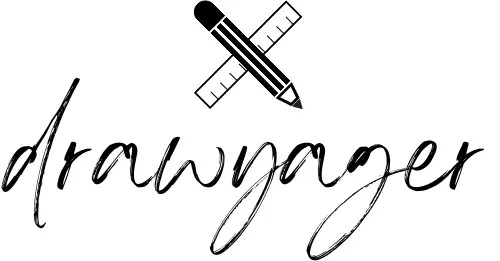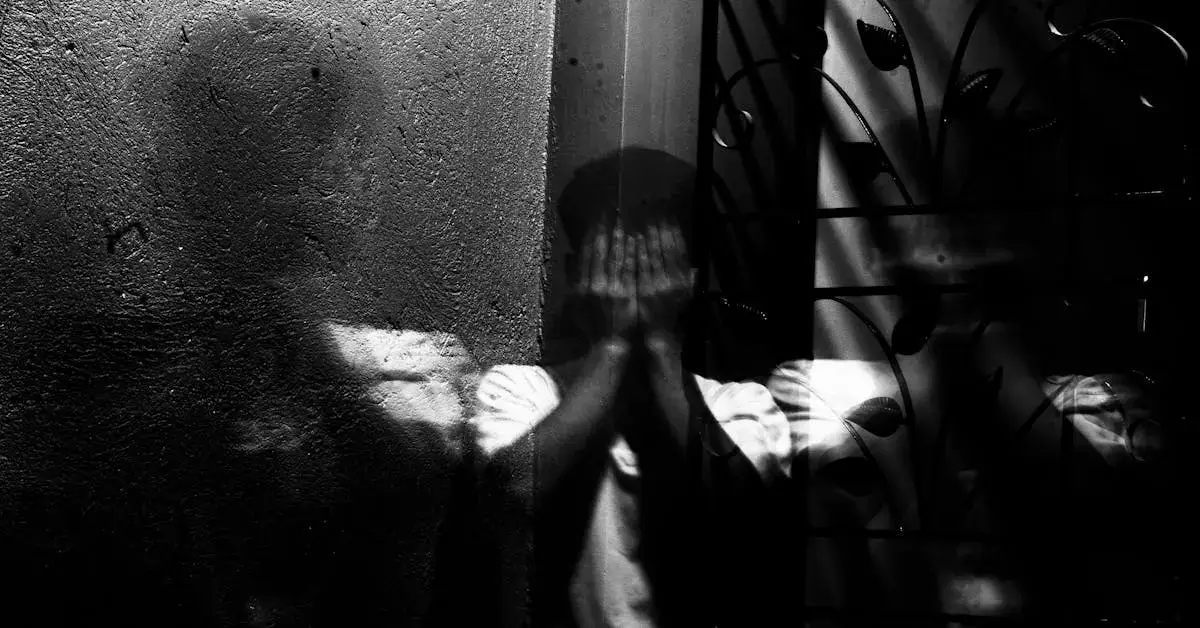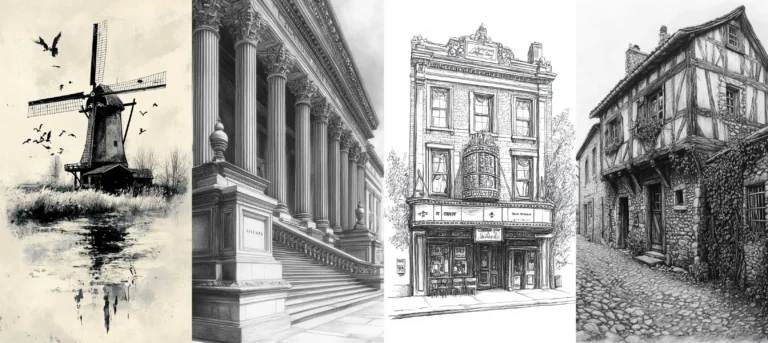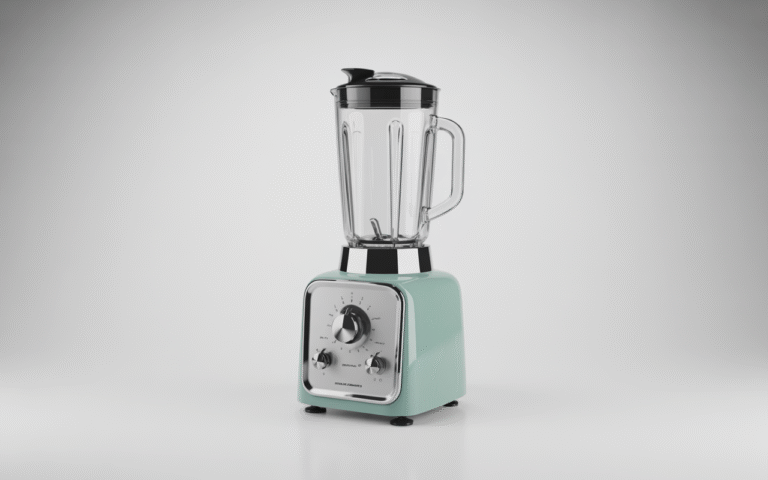Diving into drawing subjects that tug at your heartstrings really ties you closer to your feelings. Every time I grip my pencil, pouring sadness onto the page becomes a way to let go of all that emotional baggage. It’s more than just making a sad picture; it’s like sharing a slice of your soul, turning those hard-to-say feelings into picture tales.
The process of illustrating emotions like loneliness, grief, or heartache is incredibly personal. Each stroke tells a story, and sometimes the subjects we deem as sad can transform into beautiful works of art that resonate with others. Through sharing these creations, we often find common ground with people who have experienced similar emotions.
If you or someone you know is struggling, please remember that help is available. You can reach out to the National Suicide Prevention Lifeline at 988 for support and guidance. Maybe this is not the right help for you, but on this site, you can find more phone lines, where help is available. You matter.
Exploring Sad Things To Draw
When I think of sad things to draw, I focus on powerful emotional cues like forlorn facial expressions and body language to convey depth and engagement in my art. It’s a way to channel emotions and communicate stories without words.
Facial Expressions
Facial expressions are the windows to a soul experiencing sorrow. Drawing a sad face involves emphasizing features that reflect inner turmoil – perhaps furrowed brows, downturned lips, or a blank gaze. It’s a good start for sad things to draw.

- Tearful Eyes: Eyes that are welled up with tears can convey deep sadness. The eyebrows may be slightly raised, and the eyelids may be partially closed. Often, the eyes will have a glossy appearance due to the tears, and there may be tear streaks on the cheeks.
- Frowning Mouth: A downturned mouth with the lips slightly pursed can indicate sadness or disappointment. The corners of the mouth are drawn down, and the lower lip might be slightly fuller than the upper lip due to the frowning expression.
- Lowered Eyebrows and Forehead Wrinkles: When someone is sad, their eyebrows can be drawn together and downward, creating wrinkles on the forehead. This can give the face a pained or troubled appearance as if the person is carrying a heavy emotional burden. And this can be an easy start with sad things to draw.
- Downcast Eyes: A sad person may have a gaze that is directed downwards. The eyelids could be drooping, and the face may have an overall appearance of being withdrawn or introspective. This can suggest a sense of defeat or dejection.
- Sunken Cheeks and Slack Jaw: In a deeply sad or grief-stricken expression, the face may appear more hollow, with sunken cheeks. The jaw may be slack, and the face might lack the muscular tension seen in more alert or neutral expressions, reflecting a sense of being emotionally drained or exhausted.
Body Language
The body narrates tales of sadness just as eloquently as the face. A hunched-over posture, limp arms, or collapsed frame can express defeat or despair. Through my artwork, I bring to life sad holding hands drawings which can portray the supportive touch in times of sorrow, or a sad couple drawing that captures the weight of shared grief in your sad things to draw.

- Slumped Shoulders: A person feeling sad might have slumped or rounded shoulders, indicating a sense of defeat or being weighed down by emotional pain. The back may be hunched slightly, and the overall posture can appear deflated.
- Hanging Head: When someone is sad, they might hang their head low, avoiding direct eye contact. This can be accompanied by a slight tuck of the chin towards the chest, suggesting a desire to withdraw from the surroundings.
- Crossed Arms: Arms crossed over the chest can be a protective gesture that indicates vulnerability or self-comfort. It might suggest the individual is trying to shield themselves emotionally from the outside world.
- Listless Sitting or Standing: A sad person might sit or stand with a lack of energy or enthusiasm. In a seated position, they might lean forward with their hands clasped between their knees or rest their head in their hands. While standing, they may shift their weight unevenly or appear to be dragging their feet.
- Fidgeting or Self-Touch: Sadness can lead to nervous or self-soothing behaviors, such as fidgeting with one’s hands, playing with clothing, or touching one’s arms or face. These actions can communicate discomfort and a need for reassurance and they can be a good carrier for sad things to draw.
Step-by-Step Guides For Sad Things To Draw
Sad things to draw can be a poignant way to express emotions artistically. I find that a guided approach eases beginners into the process.
A Weeping Willow Tree
- Step 1: Begin by sketching the basic outline of the weeping willow tree, starting with the trunk. The trunk should be wider at the base and taper as it goes up.
- Step 2: Add a few large branches that extend upward from the top of the trunk. These branches will serve as the support for the drooping foliage.
- Step 3: Draw long, sweeping lines hanging down from the branches to represent the willow’s characteristic weeping leaves. The lines should be dense and have a slight curve to them, conveying a sense of heaviness.
- Step 4: Detail the leaves by adding texture with finer lines within the hanging foliage, giving the impression of clusters of leaves.
- Step 5: Shade the tree to enhance its form, with darker shading under the branches and lighter on the edges where light might catch the leaves, creating a somber mood indicative of sad things to draw.

If you need some inspiration about landscapes, I can recommend my article about Landscape Drawing Ideas.
A Lonely Figure in the Rain
- Step 1: Start by outlining a person standing with their head down, using loose, flowing lines to suggest a raincoat or loose clothing.
- Step 2: Sketch an umbrella being held limply by the figure, with the shape of the umbrella drooping slightly to one side.
- Step 3: Add vertical streaks around the figure to represent rain falling. Ensure some streaks overlap the figure and umbrella to create a sense of depth.
- Step 4: Draw a puddle at the figure’s feet, with concentric ripples to indicate the raindrops hitting the surface.
- Step 5: Finalize the drawing by adding reflective details to the puddle and darker shading under the umbrella and around the feet to set a somber, rainy atmosphere.

A Broken Picture Frame
- Step 1: Sketch a rectangular shape to represent the picture frame, and add a slight angle to it to give the impression that it’s lying askew.
- Step 2: Inside the frame, draw a faint outline of a happy memory, such as a family portrait or a couple embracing.
- Step 3: Add a few cracks to the frame, starting from one corner and branching out. Include some shattered glass effect by drawing sharp, jagged lines within the frame.
- Step 4: Sketch some pieces of broken glass lying around the frame to emphasize the idea of it being shattered. Use sharp, angular lines for the glass shards and vary their sizes.
- Step 5: Shade the drawing to give depth and dimension. Use darker shading around the cracks and under the shards to create shadows, enhancing the feeling of damage and loss in your sad things to draw.

A Wilted Flower
- Step 1: Start by drawing the stem of the flower using a slightly curved line. Make the stem appear a bit droopy to convey a sense of wilting.
- Step 2: Add a few leaves to the stem, making them look limp and lifeless. Include some details like veins and torn edges to the leaves for a more realistic appearance.
- Step 3: At the top of the stem, sketch the flower’s head, allowing the petals to hang down loosely. The petals should appear heavy and withered, some may even be falling off.
- Step 4: Detail the petals with fine lines to show their texture and the wilting process. Perhaps draw a petal or two detached, floating down towards the ground.
- Step 5: Shade the flower to give it dimension, with darker areas at the base of the petals and where they overlap. This will create a sad, forlorn look, fitting for sad things to draw.

If you are not sure what kind of flower to draw, or how, you can take a look at these articles on Flower Drawing Ideas or Aesthetic Flower Drawing.
An Empty Playground in the Twilight
- Step 1: Begin with the horizon line and sketch the basic shapes of playground equipment: swings, a slide, and a seesaw, all appearing unused and still.
- Step 2: Add details to the equipment, like the chains on the swings and the steps going up to the slide. Keep the lines soft and slightly curved to give the impression of silence and emptiness.
- Step 3: Draw the surrounding environment, perhaps some trees or a fence, to establish the setting. The trees should have bare branches, and the fence could be slightly broken or leaning to one side.
- Step 4: Illustrate the sky with twilight hues, using a gradient from light to dark. Add a few distant stars and a crescent moon to bring a sense of dusk.
- Step 5: Shade the ground more heavily under the equipment and lighter in the open spaces, which will enhance the sense of desolation. The contrast between the dark areas and the fading light will create a melancholic atmosphere, perfect for sad things to draw.
- Step 6: To add to the mood, you might sketch in a few fallen leaves scattered around the playground, or a lone piece of litter blowing across the scene, emphasizing the lack of activity.
- Step 7: Use a soft eraser to lightly dab at the shaded areas to create a misty effect, suggesting a cool, damp evening that can often evoke feelings of loneliness.
- Step 8: Add final touches by deepening the shadows and refining the details on the playground equipment, ensuring they look unused and abandoned.
- Step 9: Review the overall composition, adjusting the light and shadows if necessary, to balance the drawing and fully capture the sad essence of an empty playground at twilight.

Drawing Sad Elements and Characters
When it comes to sad things to draw, the choices can be as vast as our feelings. Sometimes, we manage to crystallize a fragment of our melancholy into a character or element on the page, and it can be a remarkably cathartic experience.

- A Solitary Wanderer in the Snow: Depict a lone figure walking away in a vast, snowy landscape. The character’s posture is slouched, with hands buried deep in the pockets of a heavy coat, and footsteps trailing off into the distance. The falling snowflakes around the character blend with a gray, overcast sky, creating a sense of isolation and introspection.
- A Forgotten Musician: Draw a street musician sitting on the curb with an instrument, like a violin or guitar, that has gone silent. The musician’s hat lies on the ground, devoid of coins, while passersby ignore the figure. The character’s eyes are downcast, and the body language suggests a feeling of rejection and a longing to be heard.
- An Elderly Person with Old Photographs: Illustrate an elderly character sitting at a table, looking at a collection of old, faded photographs spread out in front of them. The photos show happier times, but now the room is dimly lit and quiet. The person’s face is etched with lines of time and eyes that reflect a deep sense of nostalgia and loss. With these details, you can create great sad things to draw.
- A Child with a Broken Toy: Create an image of a young child sitting on the floor, holding the pieces of a broken toy. The child’s expression is one of confusion and sorrow, not understanding why the cherished object can no longer be played with. The scene can be set in a corner of a room, highlighting the child’s feeling of being alone with their sadness.
- A Warrior Mourning a Fallen Comrade: Portray a battle-weary warrior kneeling beside a comrade who has fallen in battle. The warrior’s armor is dented and tarnished, and they gently hold the fallen friend’s hand or helmet. Their head is bowed in a moment of silent tribute, with the chaotic battlefield blurred in the background, signifying a personal moment of grief amid widespread desolation.
Sad Character Traits
Instances of sad things to draw often focus on the human form, capturing the essence of sorrow through expressive faces and slumped postures. These drawings can range from detailed portraits to simplistic figures, each conveying a depth of emotion.

- Eyes that Reflect Loss: Eyes are often said to be the windows to the soul, and they can express profound sadness. Draw a character with slightly glossy eyes, as if on the verge of tears, with a distant gaze that seems to look through everything, reflecting a sense of loss or longing.
- Slouched Posture: A character with a slouched posture can exemplify defeat or a lack of hope. Illustrate a character with their head bowed, shoulders curved forward, and back slightly hunched. This body language can suggest the weight of their sadness is physically bearing down on them.
- Faded Smile: A smile that doesn’t quite reach the eyes or a faltering smile can be a subtle yet powerful trait of sadness. Draw a character attempting to smile, but with the corners of their mouth downturned slightly, revealing the struggle to maintain a façade of happiness.
- Worn-out Appearance: Sadness can take a toll on a person’s overall appearance. Create a character with disheveled hair, baggy or neglected clothing, and perhaps a tired expression. This can indicate a lack of energy or motivation due to their emotional state. You could also add a lot of details, which can support your sad things to draw.
- Subdued Body Language: A character who interacts with the world in a subdued manner can signal inner turmoil. Depict a character with their arms wrapped around themselves, minimal and restrained gestures, or a slow, dragging walk. These traits can show a reluctance to engage with their surroundings, a common sign of deep sadness.
Sad Clown and Cartoon Sketches
Sad clown face drawings juxtapose the expected joy of a clown’s persona with the unexpected twist of sorrow, creating a compelling image. The exaggerated features of a clown, such as a frown or teardrop, often amplify the emotional impact. Also it’s not that easy to draw clowns as sad things to draw.

- The Tearful Jester: Draw a classic clown with the iconic painted face and colorful costume, but instead of a smile, give him a frown with a single tear rolling down his cheek. The clown’s makeup is smudged, and he holds a wilted flower or a deflated balloon, symbolizing lost joy.
- The Lonely Cartoon Dog: Sketch a cartoon dog with exaggerated, droopy ears and big, sorrowful eyes sitting alone on a porch step. The dog’s posture is slumped, and its tail is not wagging but instead curled around its paws. The setting sun in the background casts a long shadow, highlighting the dog’s solitude in your sad things to draw.
- The Forgotten Puppet: Create an image of a marionette clown slumped over with strings tangled and limp, no puppeteer in sight. The stage is empty, and the spotlight shines solely on the sad puppet, emphasizing its abandonment and the silence of the theater.
- The Melancholic Mime: Depict a mime trapped in an invisible box, with hands pressed against the unseen walls. The mime’s painted face is designed to show a deep frown and furrowed brows, and the body language conveys a sense of desperation to escape the confines of a silent world.
- The Cartoon Character in the Rain: Illustrate a cartoon character, like a cat or a bear, sitting on a curb with a small puddle forming around them. They’re staring at the reflection in the water, and the raindrops create ripples, distorting the image. The character holds an umbrella, but it’s not open, signifying a surrender to the gloomy weather and their inner sadness.
Nature and Abstract Concepts
When I think of sad things to draw, nature and abstract concepts often come to mind, offering a rich tapestry of emotions and ideas to explore through art.

Sad Landscape or Nature Drawings
- Deserted Playground in Autumn: Sketch a scene of an empty playground with swings gently swaying in the wind, surrounded by barren trees with fallen leaves. The overcast sky and the absence of children playing create a sense of nostalgia and the passage of time. You can also add some left clothings, like a cap from a child, to add some more details to your sad things to draw.
- Withered Garden: Illustrate a once vibrant garden now neglected, with wilted flowers, overgrown weeds, and a cracked fountain. The lack of care and the decay of beauty evoke a feeling of sadness and loss.
- Foggy Lake at Dawn: Capture the mood of a solitary lake shrouded in heavy fog at dawn. The obscured landscape and the lack of visible life can reflect themes of uncertainty and isolation.
- Abandoned House in a Field: Draw an old, dilapidated house in the middle of an overgrown field. The broken windows, peeling paint, and the overall sense of abandonment can convey a history of memories now forgotten.
- Path Leading into Dark Woods: Create a drawing of a narrow, winding path that leads into a dense and dark forest. The foreboding trees and the absence of light can symbolize a journey into the unknown or the feeling of being lost.
Weather and Atmospheric Drawings

- Overcast Sky with Drizzling Rain: Depict a cityscape or a rural scene under a heavy, gray sky, with a light but persistent rain that creates a damp and dreary atmosphere. Puddles on the ground reflect the somber surroundings, and the absence of people or wildlife accentuates the loneliness.
- Thunderstorm over a Lonely Ocean: Illustrate an ocean scene where tumultuous waves crash under a dark, stormy sky. Lightning forks in the distance, and the only sign of life is a single, small boat struggling against the tempest, symbolizing vulnerability and the struggle against overwhelming emotions.
- Frostbitten Landscape: Create a drawing of a barren landscape covered in frost and ice, with leafless trees and a frozen river. The cold, blue hues and the stark absence of warmth or movement can convey a feeling of desolation and the harshness of winter in your sad things to draw. If you need some inspiration, what kind of winter motifs you could use to create sad things to draw, I recommend my article on Winter Drawing Ideas. Just choose one and try to make it sad.
- Heavy Fog on an Empty Street: Sketch a street that disappears into a thick fog, with dim streetlights barely cutting through the mist. The obscured vision and the muffled sounds create a sense of isolation and the unknown.
- Twilight in a Withered Orchard: Capture the melancholic beauty of a withered orchard at twilight, with gnarled trees casting long shadows in the fading light. The end of the day symbolizes endings and the passage of time, while the barren branches suggest a loss of vitality.
Sad Abstract and Geometric Drawings

- Fragmented Shapes: Create a composition of broken and fragmented geometric shapes that appear to be falling apart or shattering. The sense of disintegration can reflect feelings of despair and the inability to hold things together.
- Descending Lines: Draw a series of vertical lines that progressively get longer and descend the page, like rain. The downward movement can symbolize a decline in spirit or a sense of being pulled down by sadness.
- Dark Monochrome Palette: Use a monochrome palette with dark shades of blue or gray to paint an abstract field of overlapping geometric forms. The lack of color variation and the use of cool, dark tones can evoke a somber and introspective mood in your sad things to draw.
- Isolated Dot: Place a single, small dot on an otherwise empty, vast canvas. The dot’s isolation against the expansive background can represent loneliness and insignificance in the vastness of the world or one’s thoughts.
- Constricting Spirals: Illustrate a series of spirals that become tighter and more constricted as they move inward. The spirals can symbolize a feeling of being trapped or the inward spiral of depressive thoughts.
Specific Drawing Subjects
When I think of sad things to draw, my mind often wanders to the powerful ways in which art can evoke emotions. From the curve of a frown to the posture of a lone figure, every detail can tell a poignant story.
Drawing Expressive Faces and Emotions
Capturing raw emotion in art begins with facial expressions. To draw a sad face, I focus on the eyes and mouth.

- The Weary Traveler: Sketch a face with heavy-lidded eyes and a furrowed brow, representing a person who has seen too much and is weighed down by their experiences. The slight sagging of the facial features can indicate exhaustion and a sense of being worn out by life’s trials.
- The Grieving Soul: Illustrate a face with eyes closed and tears streaming down the cheeks. The mouth is slightly open as if caught in a silent sob, and the overall expression is one of deep sorrow and heartache, capturing the moment of profound loss or grief.
- The Disillusioned Dreamer: Draw a face looking upward with a blank gaze, reflecting a sense of hope that has faded. The slackness in the features and the distant look can suggest a loss of faith or the realization that a dream will remain unfulfilled.
- The Broken-hearted Lover: Create a portrait of a person with a half-smile that doesn’t quite mask the pain in their eyes – a classic “smiling through tears” scenario. The complexity of emotions, including love and pain intertwined, can be seen in the subtle tension around the mouth and the glossy eyes.
- The Old Soul: Depict an elderly face with deep wrinkles and a wistful expression, eyes that might have been seen many years and carry the weight of memories. The slight downturn of the lips and the pensive look can convey a lifetime of experiences and a quiet resignation to the passage of time. This can be powerful sad things to draw.
Sad Object and Symbol Drawings
Objects and symbols often carry a heavy emotional weight. I would sketch a wilted flower or a broken clock to represent loss and the passage of time. Symbols like a sad skull drawing echo themes of mortality and sadness, providing a stark visual metaphor. Here are five more ideas for sad things to draw:

- Wilting Rose: Draw a single rose with drooping petals and a bent stem, possibly with a few petals fallen beside it. The wilting rose can symbolize fading beauty, lost love, or the passage of time.
- Broken Clock: Illustrate a vintage clock with its glass shattered and hands frozen at a specific time. This could represent a moment of tragedy, the end of an era, or the relentless march of time that leaves a lot of sad things to draw behind.
- Empty Picture Frame: Create a drawing of an empty picture frame, with dust collected on the glass and the backing paper peeling away. The absence of a photo can suggest loss, forgotten memories, or a void left by someone’s departure.
- Extinguished Candle: Sketch a candle with a wisp of smoke trailing from the wick, wax dripped down the sides, and a small pool of wax at its base. The extinguished candle can evoke feelings of life extinguished too soon or at the end of a significant period.
- Frayed Ribbon: Depict a frayed ribbon, once part of a gift or award, now untied and worn, lying abandoned on a surface. The frayed edges and the solitary ribbon can symbolize the unraveling of relationships or the loss of former glory.
Sad Emotive Scenes and Interactions
Beyond solo subjects, I think about interactions and scenes that convey sadness. For instance, sad holding hands drawings might depict a final goodbye, or a sad couple drawing secluded in a downpour, encapsulating a moment of shared grief. In a scene like this, you can draw a few sad things to draw at once.

- Final Farewell at a Train Station: Sketch a scene where one person stands on the platform, hand raised in a silent goodbye, as the train pulls away. The distance between the two figures grows, symbolizing the pain of parting and the uncertainty of reunion.
- Elderly Person and a Forgotten Toy: Illustrate an elderly person sitting on a bench in an empty park, holding an old, dust-covered toy that suggests a cherished memory or a longing for the past. The stark emptiness of the park contrasts with the intimate connection to the toy.
- Child Looking Out a Rainy Window: Create a drawing of a young child with their face pressed against a windowpane, watching the rain pour down outside. Their reflection in the glass merges with the rain streaks, emphasizing a sense of longing or confinement. Drawings like these are often very sad things to draw. Also, they will carry some sense of despair.
- Solitary Birthday: Depict a solitary figure sitting in front of a small birthday cake with a single lit candle in a dimly lit room. The lack of guests and the quiet atmosphere can evoke feelings of loneliness and the passage of another year.
- Stray Dog Beside an Empty Bowl: Draw a stray dog sitting patiently beside an empty food bowl on a desolate street corner. The dog’s hopeful yet resigned expression as it waits for a kindness that may never come can pull at the heartstrings.
Developing Your Drawing Style
When I look at sad things to draw, I realize it’s not just about the emotion but also how expressing it can deepen my drawing style. I like to find the crossroads where personal experiences and innate creativity meet, helping each stroke convey a richer story.
Incorporating Personal Experiences
Drawing from my life events, I add layers of authenticity to my artwork. I’ve found that reflecting on past experiences, both the highs and lows, infuses my drawings with genuine emotion. For example, when working on sad things to draw, I might recall a tough goodbye or a challenging moment.
- Loss of a Loved One: Draw an empty chair at a table set for two, symbolizing the absence of a loved one. Personalize the setting with details that remind you of the person, such as a favorite mug left on the table or a specific flower they loved that’s now wilting in a vase.
- End of a Relationship: Illustrate a torn photograph, or two figures with their backs to each other, walking separate paths. The torn edges or diverging paths can represent the emotional rift and the personal pain of the breakup.
- Health Struggles: Create an abstract piece that uses dark, chaotic lines and shapes to represent the turmoil of dealing with a personal or family member’s illness. The intensity of the lines can convey the confusion and fear associated with the experience.
- Leaving Home: Sketch a rearview mirror view of a house getting smaller in the distance, symbolizing the moment you left home. The mirror’s frame can focus the viewer’s attention on the details that trigger your feelings of nostalgia and sadness.
- Career Setback: Draw a crumpled piece of paper with faint lines of a resume or a project, discarded and lying next to a trash can. The crumpled paper symbolizes rejection or failure, and the personal connection comes from the specific project or job you reference. These drawings can be very individual and so it’s a great choice for sad things to draw.
Finding Creativity in Sadness
I’ve learned that sadness, often seen as a blocker to creativity, can actually give rise to some of the most creative and heartfelt pieces. In these moments, my art journal is both a canvas and a sanctuary where self-expression has no limits. To draw things that make me happy within the theme of sad things to draw, I focus on creating contrast with subtle use of color or light, showcasing that in every somber moment there’s a possibility of hope.
Art has the profound ability to express the full spectrum of human emotions, including those that are less often celebrated, such as sadness. Drawing can be a therapeutic process, helping artists to cope with their emotions and find meaning in their experiences. Here’s how you can find creativity in sad things to draw and turn melancholy into a powerful artistic muse.
- Embrace the Emotion: Sadness can be a deeply personal and moving emotion that resonates with many. By embracing it, you allow yourself to explore themes and narratives that are universally understood. Start by reflecting on what makes certain things sad for you. Is it the sense of loss, loneliness, nostalgia, or perhaps a combination of these? Use these reflections as a springboard for your creativity to create more out of your sad things to draw.
- Look for Symbolism: Symbols are a potent way to convey complex emotions in art. Consider common symbols of sadness, such as wilting flowers, empty spaces, or fading light, and think about how you can put your twist on them. Personalize these symbols with elements from your own life to make your artwork more authentic and relatable.
- Tell a Story: Every sad experience has a story behind it. Use your drawings to narrate these tales. It could be a visual representation of a personal setback, a depiction of a poignant moment you witnessed, or an imagined scene that evokes a sense of sorrow. Stories are compelling and can add layers of depth to your sad things to draw.
- Experiment with Color and Light: Colors and lighting can dramatically alter the mood of a drawing. Cooler tones like blues and grays can evoke a somber feeling, while the use of shadows can add a sense of drama or isolation. Experiment with these elements to find unique ways to express sadness in your art.
- Transform the Sadness: Finally, use your drawings as a way to transform sadness into something beautiful. The act of creating art can be a powerful way to process and make peace with your emotions. Your sad things to draw can become a testament to the resilience and the human capacity to find beauty, even in the depths of sorrow.
Frequently Asked Questions
In this guide, I’ll share some heartfelt answers to common queries about sad things to draw.
What would be an easy subject to draw when feeling sad?
An easy subject to draw when feeling down could be a single wilting flower, representing both beauty and sadness. If you don’t know which one, you can read this article for inspiration: Flower Drawing Ideas
What are some ideas for creating drawings that convey deep emotion?
Powerful images depicting isolation, such as a figure silhouetted against a stark landscape, can convey deep emotional states. Or a deflated balloon caught in a barren tree branch against a gray sky, or try an abandoned teddy bear lying in a puddle on a rainy day.
What can I sketch to represent sadness subtly?
Sketching a faintly drooping tree against a foggy backdrop can symbolize sadness with a soft touch.
How can I express the feeling of heartbreak in my artwork?
To express heartbreak, consider drawing a shattered glass heart, illustrating the fragility and pain of love lost. I think you will also find inspiration in my article with Heart Drawing Ideas.
Could you suggest something to draw that symbolizes loneliness?
Drawing a solitary figure gazing out of a large, empty window can be a powerful symbol of loneliness.
Are there any gentle ways to depict sadness in a drawing?
Creating gentle depictions of sadness might involve subtle gray tones and images like a trail of footsteps in the snow, leading to the unknown.
If you liked this blog post about Sad Things To Draw, don’t forget to leave me a comment down below to tell me about your experience with it.
And remember – if you or someone you know is struggling, please remember that help is available. Just drawing sad things to draw won’t help every time. You can reach out to the National Suicide Prevention Lifeline at 988 for support and guidance. Maybe this is not the right help for you, but on this site, you can find more phone lines, where help is available. You matter.






